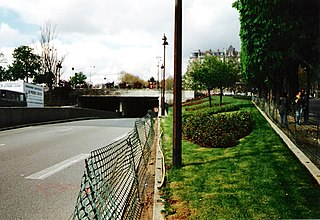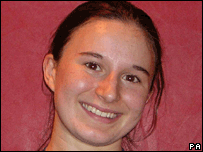Related Research Articles
Inquests in England and Wales are held into sudden or unexplained deaths and also into the circumstances of and discovery of a certain class of valuable artefacts known as "treasure trove". In England and Wales, inquests are the responsibility of a coroner, who operates under the jurisdiction of the Coroners and Justice Act 2009. In some circumstances where an inquest cannot view or hear all the evidence, it may be suspended and a public inquiry held with the consent of the Home Secretary.

The Hillsborough disaster was a fatal crowd crush at a football match at Hillsborough Stadium in Sheffield, South Yorkshire, England, on 15 April 1989. It occurred during an FA Cup semi-final between Liverpool and Nottingham Forest in the two standing-only central pens within the Leppings Lane stand allocated to Liverpool supporters. Shortly before kick-off, police match commander David Duckenfield ordered exit gate C to be opened in an attempt to ease crowding, which led to an influx of supporters entering the pens. This resulted in overcrowding of those pens and the fatal crush; with a total of 97 fatalities and 766 injuries, the disaster is the deadliest in British sporting history. Ninety-four people died on the day; another person died in hospital days later, and another died in 1993. In July 2021, a coroner ruled that Andrew Devine, who died 32 years later, after suffering severe and irreversible brain damage on the day, was the 97th victim. The match was abandoned and restaged at Old Trafford in Manchester on 7 May 1989; Liverpool won and went on to win that season's FA Cup.

A coroner is a government or judicial official who is empowered to conduct or order an inquest into the manner or cause of death. The official may also investigate or confirm the identity of an unknown person who has been found dead within the coroner's jurisdiction.

Gary Andrew Speed was a Welsh professional footballer and manager. As manager of Wales, Speed is often credited as being the catalyst for the change in fortunes of the national team and as setting the pathway to future successes.
In English law, Irish law and Northern Irish law, unlawful killing is a verdict that can be returned by an inquest in England and Wales and Ireland when someone has been killed by one or more unknown persons. The verdict means that the killing was done without lawful excuse and in breach of criminal law. This includes murder, manslaughter, infanticide and causing death by dangerous driving. A verdict of unlawful killing generally leads to a police investigation, with the aim of gathering sufficient evidence to identify, charge and prosecute those responsible.

During the early hours of 31 August 1997, Diana, Princess of Wales, died from injuries sustained earlier that night in a fatal car crash in the Pont de l'Alma tunnel in Paris, France. Diana's partner, Dodi Fayed, and the driver of the Mercedes-Benz W140, Henri Paul, were found dead inside the car. Dodi's bodyguard, Trevor Rees-Jones, was seriously injured and was the only survivor of the crash.
The open verdict is an option open to a coroner's jury at an inquest in the legal system of England and Wales. The verdict means the jury confirms the death is suspicious, but is unable to reach any other verdicts open to them. Mortality studies consider it likely that the majority of open verdicts are recorded in cases of suicide where the intent of the deceased could not be proved, although the verdict is recorded in many other circumstances.
Operation Paget was the British Metropolitan Police inquiry established in 2004 to investigate the conspiracy theories about the death of Diana, Princess of Wales in a car crash in Paris in 1997. The inquiry's first report with the findings of the criminal investigation was published in 2006. The inquiry was wound up following the conclusion of the British inquest in 2008, in which a jury delivered its verdict of an "unlawful killing" due to the "gross negligence" of both the driver of Diana's car and the pursuing paparazzi.
An inquest is a judicial inquiry in common law jurisdictions, particularly one held to determine the cause of a person's death. Conducted by a judge, jury, or government official, an inquest may or may not require an autopsy carried out by a coroner or medical examiner. Generally, inquests are conducted only when deaths are sudden or unexplained. An inquest may be called at the behest of a coroner, judge, prosecutor, or, in some jurisdictions, upon a formal request from the public. A coroner's jury may be convened to assist in this type of proceeding. Inquest can also mean such a jury and the result of such an investigation. In general usage, inquest is also used to mean any investigation or inquiry.

There are many conspiracy theories surrounding the death of Diana, Princess of Wales, on 31 August 1997. Official investigations in both Britain and France found that Diana died in a manner consistent with media reports following the fatal car crash in Paris. In 1999, a French investigation concluded that Diana died as the result of a crash. The French investigator, Judge Hervé Stephan, concluded that the paparazzi were some distance from the Mercedes S280 when it crashed and were not responsible for manslaughter. After hearing evidence at the British inquest, a jury in 2008 returned a verdict of "unlawful killing" by driver Henri Paul and the paparazzi pursuing the car. The jury's verdict also stated: "In addition, the death of the deceased was caused or contributed to by the fact that the deceased were not wearing a seat belt and by the fact that the Mercedes struck the pillar in the Pont de l'Alma tunnel rather than colliding with something else."

Jean Charles da Silva e de Menezes was a Brazilian man killed by officers of the London Metropolitan Police Service at Stockwell station on the London Underground, after he was wrongly deemed to be one of the fugitives involved in the previous day's failed bombing attempts. These events took place two weeks after the London bombings of 7 July 2005, in which 52 people were killed.

Peaches Honeyblossom Geldof was an English columnist, television personality, and model.

The Ballymurphy massacre was a series of incidents between 9 and 11 August 1971, in which the 1st Battalion, Parachute Regiment of the British Army killed eleven civilians in Ballymurphy, Belfast, Northern Ireland, as part of Operation Demetrius. The shootings were later referred to as Belfast's Bloody Sunday, a reference to the killing of civilians by the same battalion in Derry a few months later. The 1972 inquests had returned an open verdict on all of the killings, but a 2021 coroner's report found that all those killed had been innocent and that the killings were "without justification".
Gareth Wyn Williams was a Welsh mathematician and Junior Analyst for GCHQ on secondment to the Secret Intelligence Service who was found dead in suspicious circumstances in Pimlico, London, on 23 August 2010, at a flat used to house Security Service's staff. The inquest found that his death was "unnatural and likely to have been criminally mediated." A subsequent Metropolitan Police re-investigation concluded that Williams's death was "probably an accident".

Charlotte Shaw was a fourteen-year-old British schoolgirl who drowned while crossing a swollen stream on Dartmoor during training for Ten Tors in 2007. Her death, the first to occur in connection with Ten Tors or one of its training expeditions, made national news headlines in the United Kingdom. She was with a group of students from Edgehill College trekking the route of Ten Tors in training for the main event when the group got into difficulties crossing a stream. Shaw slipped into the water and was washed downstream. She was located 20 minutes later by a Royal Navy search and rescue helicopter and airlifted to Derriford Hospital in Plymouth, where she died in the early hours of the next morning.

Mark Duggan, a 29-year-old black British man, was shot dead by police in Tottenham, North London on 4 August 2011. The Metropolitan Police stated that officers were attempting to arrest Duggan on suspicion of planning an attack and that he was in possession of a handgun. Duggan died from a gunshot wound to the chest. The circumstances of Duggan's death resulted in public protests in Tottenham, which led to conflict with police and escalated into riots across London and other English cities.
Christianne and Robert Shepherd were an English sister and brother from Horbury, West Yorkshire who died of carbon monoxide poisoning while on holiday in Corfu in October 2006. At the time of their deaths, Christi was seven years old and Bobby was six.

The death of Helen Bailey is a British child murder case dating from 1975 in which an eight-year-old girl's death was originally classified by a coroner as being due to undetermined causes and potentially sourcing from an "accident or [a] practical joke gone wrong" despite the fact the child was found in a secluded area and that her jugular vein had been severed. The original verdict into Bailey's death was overturned and replaced with one of unlawful killing in 2019.
References
- ↑ Leogue, Joe (31 January 2018). "Inquest hears man, 84, drove in wrong direction on motorway before fatal collision in 2016". Irish Examiner .
- ↑ "Kit delays led to soldier's death". BBC News. 18 December 2006. Retrieved 1 April 2008.
- ↑ "Chronology of proceedings - Work Related Deaths and Inquests - Enforcement Guide (England & Wales)". Health and Safety Executive.
- ↑ "What is a narrative verdict?". ITV News. Retrieved 16 December 2020.
- ↑ Grice, Elizabeth (1 October 2009). "Mistakes, missed chances and a young life lost". London: Daily Telegraph. Archived from the original on 7 May 2012. Retrieved 1 October 2009.
- ↑ Savill, Richard (26 October 2010). "Coroner calls for safety improvements at Ten Tors inquest". Daily Telegraph. Retrieved 4 March 2017.
- ↑ "MI6 death: Gareth Williams 'probably' killed unlawfully". BBC News. 2 May 2012. Retrieved 2 May 2012.